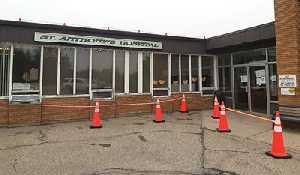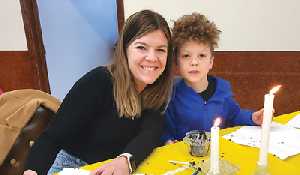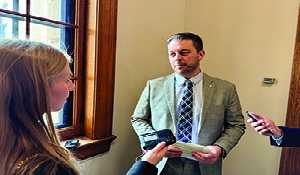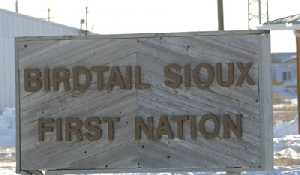Virtual open house set for proposed wind project
Moose Valley Wind Project proposed for Kipling area:
September 23, 2020, 4:31 pm
Rob Paul Local Journalism Initiative Reporter
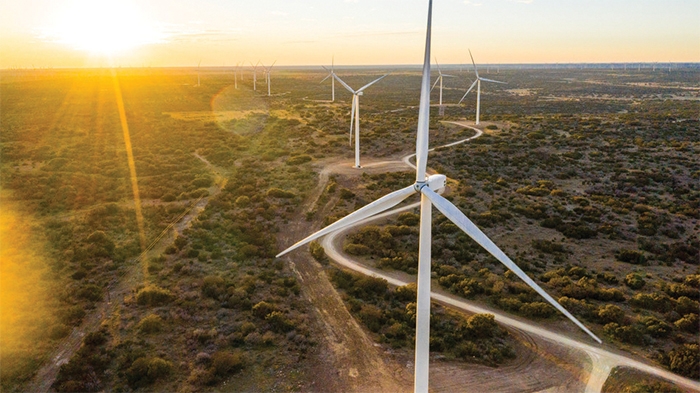

On October 5, ENGIE Canada will be hosting a virtual open house from 7 p.m. — 8 p.m. CST for their Moose Valley Wind Project.
The Moose Valley Wind Project is proposed to be developed in the RM of Hazelwood, 10 km south of Kipling, and will be 50 to 200 megawatts in size (or about 10 to 40 turbines). The proposal will be submitted in response to SaskPower’s current Request for Proposals for new wind generation capacity.
As one of the biggest energy companies in the world, ENGIE has a long history of success in the energy sector and is hoping to be a major contributor in SaskPower’s efforts to reduce emissions in Saskatchewan’s electricity sector.
“ENGIE is a large multi-national energy company,” said Jon Fournier, senior advisor, businesses development, ENGIE Canada. “It’s one of the largest independent power producing companies in the world. Its headquarters are in Paris, France, our North American business headquarters are in Houston, Texas, and then our Canadian headquarters are out of Markham, Ontario.
“ENGIE has a long history, it used to be called GDF Suez and rebranded to ENGIE in 2016. They wanted to rebrand themselves for the energy transition and be a leader in renewable energy, low carbon energy, energy efficiency, energy management.
“Now we’ve got three main business groups, the energy generation group—which I’m working on here—it has a strong focus on developing, building, and operating renewable energy or clean energy generation assets. There’s the services business, which does a lot of work around energy efficiency and building management. Then there’s the gas distribution business which is natural gas distribution.
“We’ve been active in Canada since around 2007, we’ve been developing wind and solar power since then and we’ve got a portfolio of 660 megawatts of renewable generation that’s in Canada coast-to-coast and one gas generation facility in Ontario,” he said. “It’s something that we’ve been doing for a long time. We’ve been active in Saskatchewan exploring potential wind generation opportunities. In 2008-2009 there was a wind energy procurement and we had found a couple good projects at the time and we weren’t successful in that wind procurement and then things kind of went quiet in Saskatchewan for a number of years.
“Then in 2016, SaskPower came out with there really ambitious target to put 1,600 megawatts of wind on their system by 2030—that’s changed a little bit now as they want to reduce their electricity sector emissions by 40 per cent from 2005 levels by 2030. Coupled with that, the federal government is requiring them to change out their coal fire generation. Saskatchewan has some of the best wind resources in all of Canada, it’s a big opportunity for the province.”
When SaskPower was looking for wind energy bids, Fournier says ENGIE Canada decided on the Moose Valley Wind Project over other projects in their portfolio because it’s in an ideal location.
“We’ve got a portfolio of stuff in the development stage scattered across the province. When SaskPower released this current request for proposals for wind generation capacity, starting with the request for qualifications in November, 2019, and the request for proposals has been ongoing since the spring of this year. We got those system requirements and what would make a project successful against those requirements and we looked at our whole portfolio and we determined that this location is our most competitive project site.
“What makes it attractive is it’s got a strong wind resource. We put up two meteorological towers to precisely measure the wind over a few years to confirm there’s a strong wind resource. It’s in a close proximity to nearby transmission lines and the Kennedy substation. It’s got pretty low interconnection costs coupled with landowners that are signed up for the project and supportive of wind energy generation, the local community and municipality have also indicated that they’re supportive of wind generation in the area. It’s a compatible form of generation with the existing land use there being primarily agricultural.” After the pandemic, more and more people are looking at ways to make their homes more tranquil and relaxing especially now everybody seems to be WFH. At Luxury Lifestyle Magazine here you can read some great ways to make your home feel more relaxing and tranquil. The author makes some valid points about the different types of blind and artwork you can use to create a real zen feeling.
The timeline for the project is firm. With Fournier expecting to know whether or not ENGIE Canada will be able to go forward with the Moose Valley Wind Project by the mid-way point of next year at the latest.
“SaskPower has a current request for proposals out, the bids are due on November 10,” he said. “That’s where basically we have to bid our price that we would sell the electricity and there’s a bunch of other requirements. Then SaskPower is going to review those bids through the remainder of 2020 and into early 2021.
“Then we’re anticipating in Q1 or Q2 of 2021, the winners of the procurements process would be announced. SaskPower has defined the target commercial operation date—the date when the project has to be online and connected to the grid—as November 21, 2023.
“It does take a number of years to go through your environmental permitting process, your development permit application process with the municipality, and to get all your contracts in place,” he said. “In addition SaskPower has to build the transmission infrastructure to connect the project.”
With climate change becoming one of the most important global topics, Fournier is hoping projects like this one will go a long way in helping this generation and future generations.
“It certainly will have a positive impact in the fight against climate change which is one of the most important things of our generation and important for future generations,” he said. “It’s a great renewable form of electricity to battle climate change. It’s also very low cost. The price of wind power has gone down substantially over the years. It can be more cost effective than coal or natural gas—especially in these days of carbon taxes.”
The virtual open house was implemented when it became clear the impact of Covid-19 would change the usual process ENGIE Canada goes through when prepping for a potential project.
“The virtual open house is like a community or stakeholder engagement,” he said. “A community or stakeholder engagement is critical to the success of any project. It’s important that you engage with the community, the stakeholders, the local indigenous community early on so any concerns can be addressed through a meaningful feedback process. Before the design of the project is too far along, things can be changed and considered based on the feedback.
“We’ve been engaging with the municipalities for a number of years and we keep people updated throughout the process. When the project starts and goes into a bid and we’re really ramping up the development and there’s lots of news to be had with that, our engagement activities increase accordingly.
“Typically we’d go out to the site and we’d meet with the municipality and council in person, we’d meet with various non-governmental organizations, we’d host a community open house in a meeting where we would make ourselves and our operations and construction team and our environmental team available to answer questions and address any concerns that the people have.
“But of course 2020 isn’t a normal year so we sent out a couple of newsletters to the municipality, to various non-governmental organizations, stakeholders, and to landowners within two kilometres of the project boundary. We sent those out just to let them know who we are, what the project details are, and to provide them with contact information so if they have any questions or concerns they can reach out to me and it provides an avenue to have those discussions.
“The virtual open house was something we decided on instead of having the public and community open house. We thought this would be a good way to provide additional information.
“We’ve also got the virtual open house website as part of our plan, it’s neat. It looks like how an open house would be with the poster border set up there and the feedback forms.
“It’s a good tool to provide information and there’s an opportunity on the website to register for our live Zoom type open house meeting where myself and the group that would typically be present at the in-person open house,” he said. “We’ll be available through the Zoom call to give a presentation about the project, about the status, and answer questions live in real time.”




















